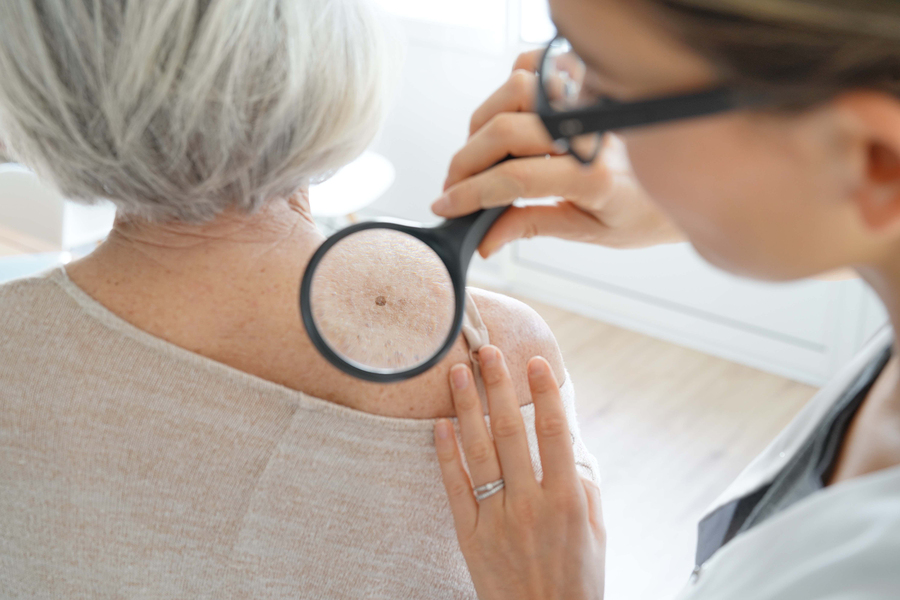Skin cancer: who is most at risk?
Malignant melanoma is a very aggressive form of skin cancer and the fifth most common cancer in the UK with around 42 new cases diagnosed every day.
Cancer Research UK report that 1 in 54 people will be diagnosed with malignant melanoma during their lifetime, yet early diagnosis, with no spread of the cancer to any part of the body, could drastically increase the prospect of the cancer being cured by removing it.
How are malignant melanomas caused?
The one main factor which increases the risk of developing melanoma is ultraviolet light deriving from either the sun or sunbeds.
Who is most at risk?
Anyone can develop melanoma but those people most at risk include:
- People with fair skin who burn easily
- People with lots of moles
- Those with a history of melanomas
- Those who suffered sunburn as a child
- Those with a weakened immune system
- People with solar keratosis – patches of rough, dry skin. According to studies, their risk of developing melanoma on the head, neck or limbs is 4 times higher than the general population.
What if I have lots of moles?
It is normal to have moles and some of us have more than others. Moles are clusters of cells that produce a pigment in the skin. Melanomas develop when those cells invade the skin around them or spread to other areas in the body such as the lymph nodes, liver and lungs.
Having lots of moles doesn’t mean for certain that you will get melanoma but it does mean that you should be more careful about exposure to the sun and look out for any changes to your moles.
Changes to moles
Check regularly for signs of changes to your moles. There are several different types of melanomas so a mole could change shape, colour or even sensation.
The presence of a melanoma may be indicated by one or more of the following changes to a mole:
- Irregular shape
- Ragged edges
- A colour change (there could be a different colour in one part than in another)
- An increase in size – particularly more than 6mm across
- Raising from the surface of the skin – particularly if it is also irregular
Melanomas are most commonly found in men on the trunk and in women on the legs but can appear on any part of the skin.
See an illustration of the warning signs for an abnormal mole above.
What is the treatment for melanoma?
If the melanoma is caught early then surgery is usually the main option but if the melanoma is advanced then treatment may involve biological therapy, chemotherapy or radiotherapy.
How should I best protect myself?
Protecting your skin from sun damage in the first place is key. Keep covered up – wear long, loose fitting clothes, a hat and sunglasses with UV protection. Stay out of the sun between 11am and 3pm or when it is at its height. Use a sun cream with protection of at least 30 and keep babies and young children out of direct sunlight.
Keep track of your moles and report any changes to your doctor. A good way to do this is to monitor them by taking photos so you will easily be able to see if they have changed.
Read more on how to stay safe in the sun.
Disclaimer
All content on Silversurfers.com is provided for general information only, and should not be treated at all as a substitute for the medical advice of your own doctor or any other health care professional. Silversurfers will not be responsible or liable for any diagnosis made by a user based on the content on www.silversurfers.com and we are also not liable for the content of any external websites or links from or to Silversurfers to any other websites. Please always consult your own doctor if you’re in any way concerned about any aspect of your health
Melina - Assistant Editor
Latest posts by Melina - Assistant Editor (see all)
- Cream Cheese Orange Bars - May 2, 2024
- Top tips for hay fever sufferers - April 14, 2024
- Paysan Breton Cream Cheese Breakfast Wraps - April 12, 2024
- 4 Homemade Sweet Treats for Easter - March 24, 2024
- Playground Memories - March 10, 2024





















